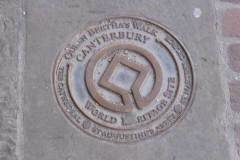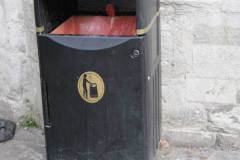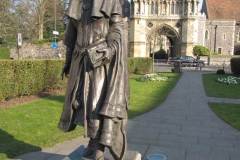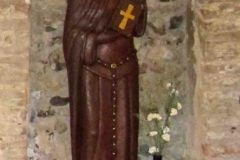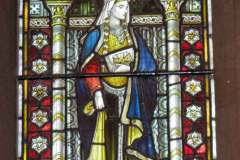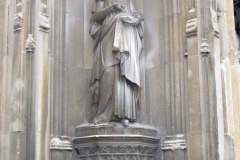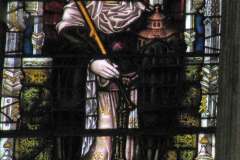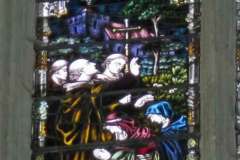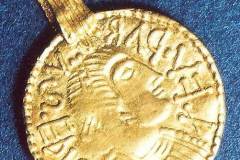(539 to about 612) Queen of Kent, Princess of the Franks
When, around 580 AD, Princess Bertha, daughter of Charibert King of Paris, married Ethelbert (later to become King of Kent) and came to live in Canterbury, part of the bargain was that she would bring her chaplain bishop Liudhard and be allowed to follow her Christian faith. Her subsequent role in the re-introduction of Christianity to England was important. She, it seems, was an important reason why Augustine became established in Canterbury in 597 AD rather than in London or other centres, and she was instrumental in the conversion of Ethelbert to the Christian faith. Without her presence, monastic settlements and the cathedral would have developed elsewhere, and Canterbury today could well have been no more than a large village. It is striking that one who left no writings or speeches, and passed no laws, could have had such a major influence on the City’s importance. Bertha was also the grandmother of Saint Eanswythe.
The modern City celebrates Bertha’s achievements in several ways:
- The Bertha trail, consisting of 14 bronze plaques set in pavements (Image 1), runs from the Buttermarket to St Martin’s church via Lady Wootton’s Green. A brochure is available from the City Tourist Office. The first plaque outside the Cathedral Christ Gate is often hard to spot, as it is frequently hidden by a rubbish bin to the right of the cathedral entrance (Image 2)!
- Statues of Bertha and Ethelbert stand on Lady Wootton’s Green (Image 3), with detailed information boards. Bertha’s cloak, clothing, jewellery, and prayer book are based on known styles at the time.
- A wooden model of the two statues is on show in the City Museum (Stour Street). Notice that on the original model Ethelbert’s right hand extends low to the ground – this has been altered to a high theatrical wave on the statue, apparently on health and safety grounds!
- Inside St Martin’s Church, see the wooden statue of Bertha (Image 4) and the depiction in the stained-glass of the north wall (Image 5).
- The Queningate through which Bertha passed on her way to St Martin’s church is still visible in the city wall
- As you enter the cathedral south-west door, see Bertha’s statue on the right of the porch (Image 6). Two more depictions can be seen in the stained-glass windows of the Chapter House (Images 7 and 8).
- A remarkable confirmation of the Bertha story came with the discovery of a Liudhard coin (Image 9) by workmen digging near St Martin’s in early Victorian times. To see the find itself, you’ll need to visit Liverpool Museum.
Update as of March 2024: In a run up to International Women’s Day, he impact that Bertha had on Christianity in England and her links to St Martin’s attracted the attention of ITV who broadcast a piece on Wednesday 6 March for their evening news and ITVX.
Sources: Oxford Dictionary of National Biography, Taylor (2001), Woodman (1981), information boards on Lady Wootton’s Green; and the Baldwin web site (for children) Great Englishwomen by M. B. Synge http://www.mainlesson.com/

